Clothes are meant to wear out no matter how well you take care of them. After a few uses, you can find little holes or wear out in them. But does that mean you should throw it that way? No, you shouldn’t! You can repair them with darning and mending.
So, is both the same thing? 🤔 not really.
Darning & Mending
Darning is a specific mending technique that weaves thread to repair holes, while mending is a broader term encompassing various methods to fix or restore garments.
When to use which one? Let’s learn about them differently.
At a glance:
- Darning is A specific technique that involves weaving thread into the fabric to repair holes or thin spots.
- Mending is a broader term encompassing various methods like sewing seams, patching, or reinforcing weak areas.
- Both techniques are sustainable and help reduce waste by extending the life of your clothes.
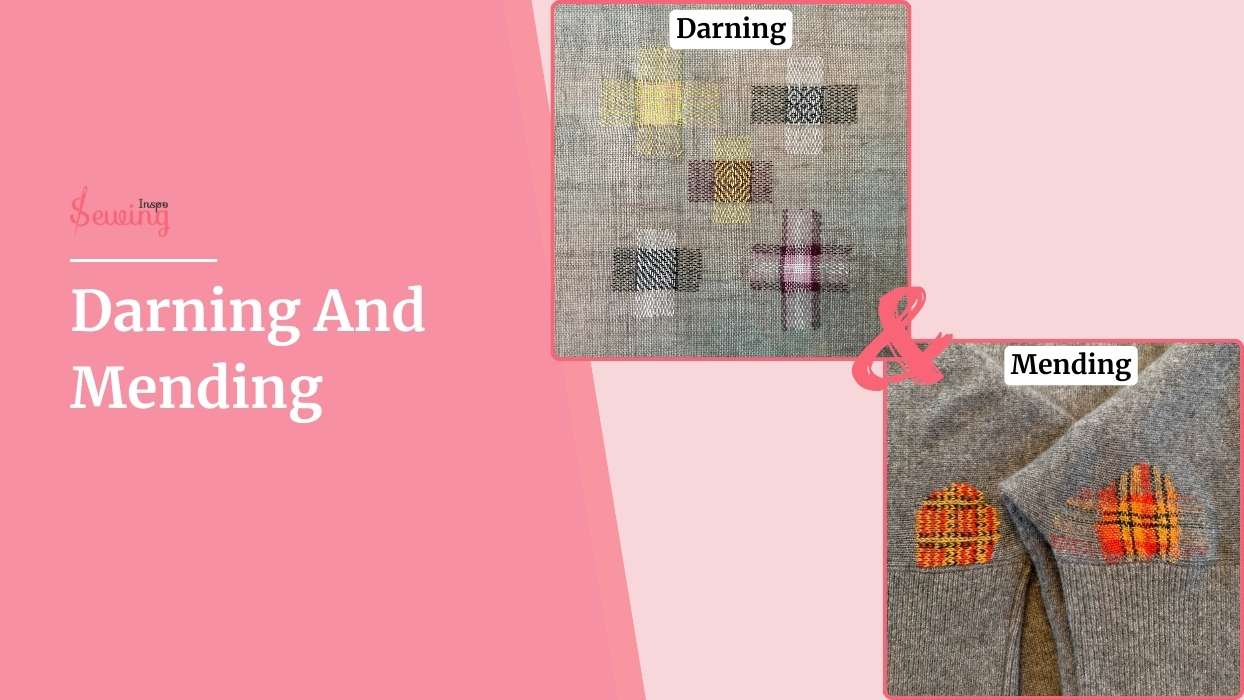
Table of Contents
What Is Darning?
A darning stitch is basically a way to fix holes or worn-out spots in fabric, usually in clothes. Think of it as sewing, but instead of creating something new, you’re patching things up.
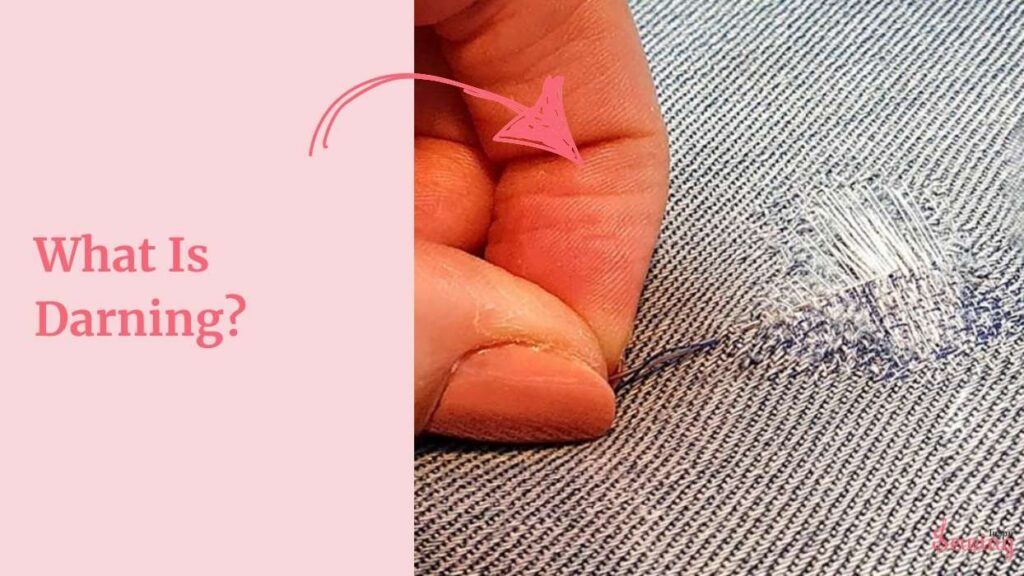
That’s what is darning. You use a needle and thread to weave new stitches into the damaged area, almost like creating a mini patch that blends with the fabric.
It’s super handy for repairing socks, sweaters, or even jeans, and the best part?
You get to keep your favorite items instead of tossing them out. Plus, it’s a creative and eco-friendly way to save money and reduce waste! And there are so many pattern options to choose from.
What Is Mending?
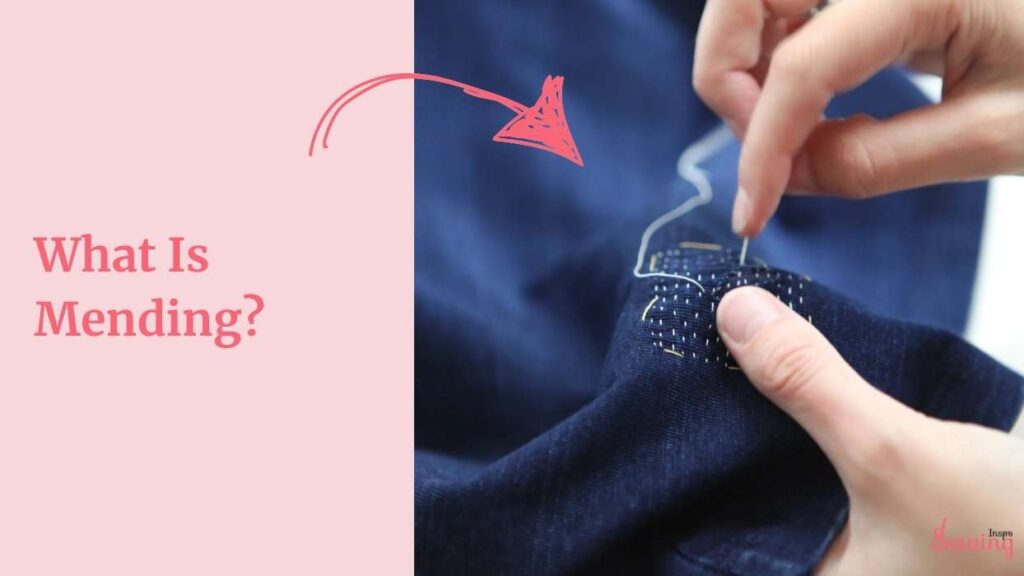
Mend, repair, patch, and rebuild all mean fixing something that’s broken, damaged, or not working right.
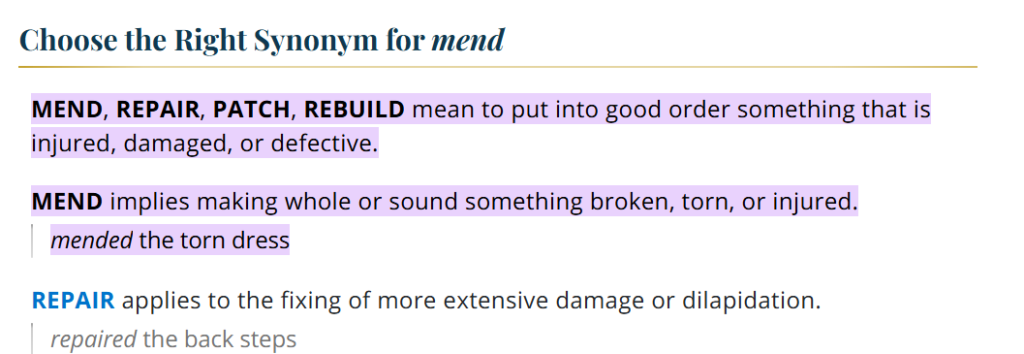
When you mend something, you’re making it whole or functional again, like stitching up a torn dress or fixing a broken strap. It’s all about restoring it to good condition, whether it’s fabric, furniture, or something else in need of a little TLC.
So basically, mending means fixing some worn-out fabric.
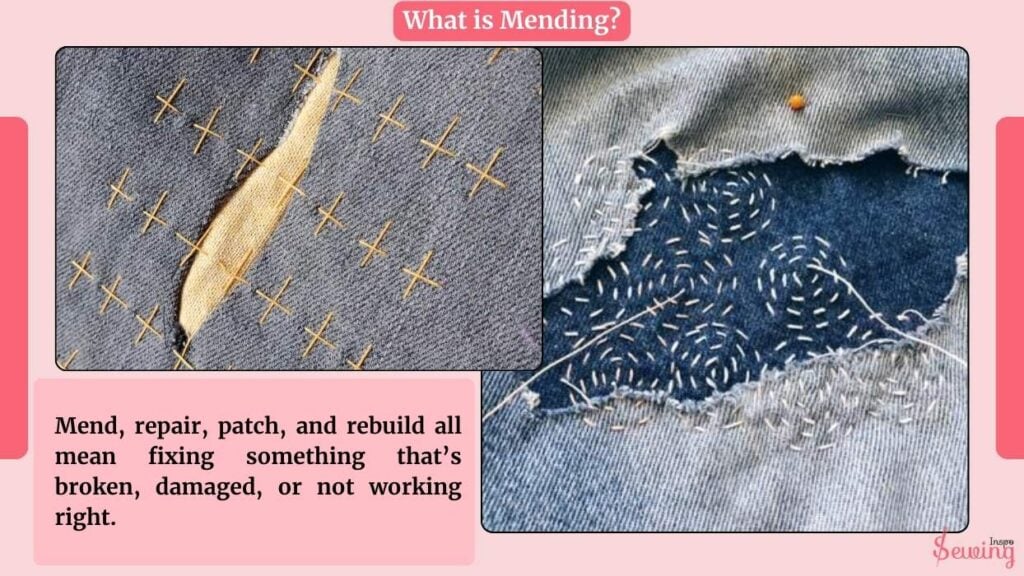
You can get creative with it, too—
Add colorful patches and fun stitching, or keep it simple and invisible. It’s a practical, budget-friendly, and eco-conscious way to keep your wardrobe in great shape while adding a personal touch.
What’s The Difference Between Darning And Mending?
So the main difference between darning and mending is darning stitch is the technique of repairing clothes, sometimes for embroidery too. The term mending refers to repairing damaged clothes. Kinda like Darning and sewing patterns.
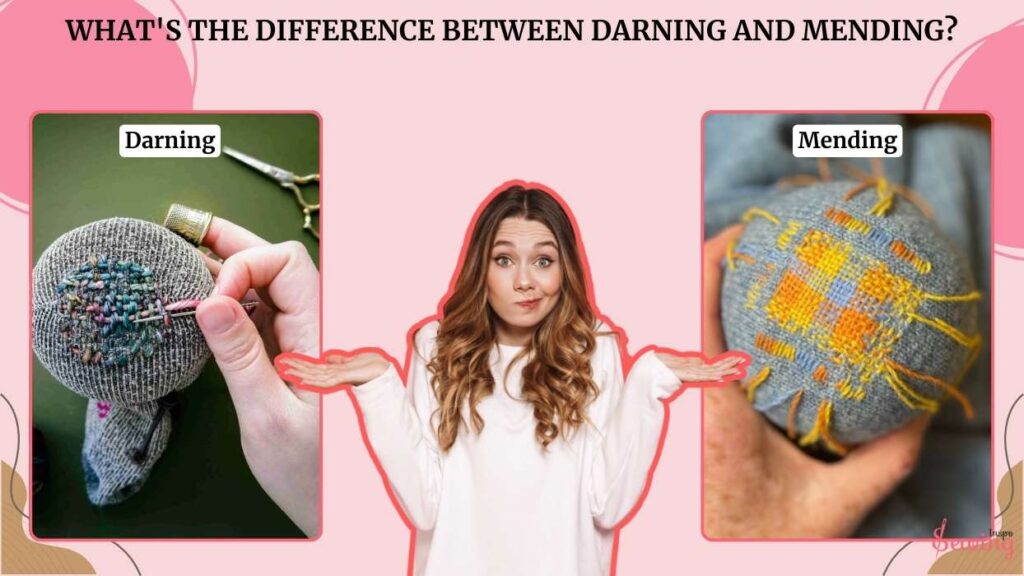
Is that all? Not at all. There is more.
| What’s the Difference? | Darning | Mending |
| What it is | Darning is all about fixing holes or thin spots by weaving new thread into the fabric. | Mending is a broader term for fixing clothes, like sewing tears or adding patches. |
| Where it’s used | Great for repairing socks, sweaters, and other knitwear. | Perfect for fixing seams, tears, or holes in any type of clothing. |
| How it’s done | You use a needle and thread to weave over the damaged area, almost like creating a mini patch. | It can involve sewing, patching, gluing, or any method that works to fix the damage. |
| Look & Style | Darning can blend in with the fabric or stand out as decorative stitching for example scotch darning. | Mending can be hidden for a seamless fix or turned into a fun, creative patch. |
| Skill Level | It takes a bit of practice to master the weaving technique. | Some mending methods are super beginner-friendly, but you can also get creative with it! |
| Eco-Friendly? | Absolutely! It’s a great way to save your clothes and reduce waste. | For sure—mending keeps your clothes out of the trash and in your closet. |
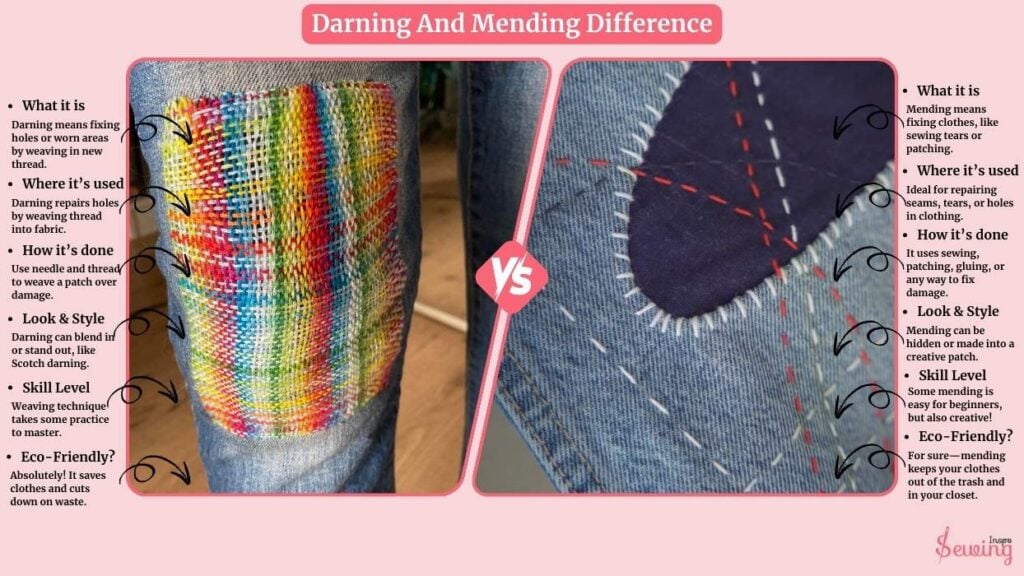
Are the darning and mending meaning so different from each other, then,
Why Is Mending Socks Called Darning?
Mending socks is called darning because of the specific sewing technique used to fix them. It is basically any sewing technique we can do to rainforce cloths.
Darning involves weaving thread into the fabric to fill in holes or reinforce worn areas, creating a strong, almost seamless repair. Historically, this method was especially popular for socks, stockings, and other items that were prone to wear and tear but needed to be durable.

The term “darning” comes from an old French word, darnier, which means “to mend.” Over time, it became associated with this unique weaving technique, especially for socks.
So, when you “darn” socks, you’re not just sewing. You’re doing a specialized type of repair that’s stood the test of time! That’s one of the main Darning And Mending Difference.
Darning And Mending Techniques Difference
Darning and mending are both ways to fix clothes, but they differ in how they’re done.
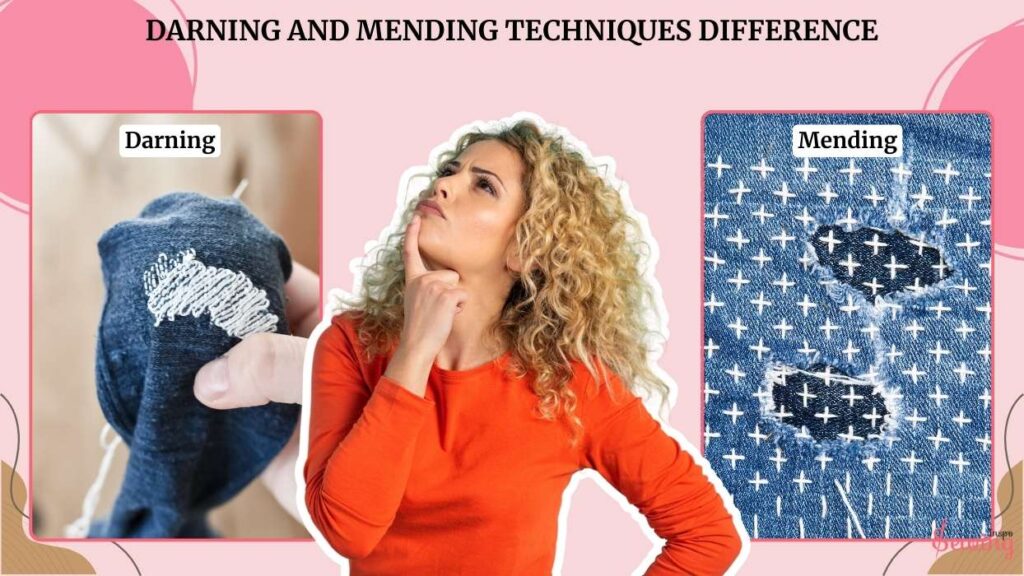
Darning is more like weaving; you use a needle and thread to create new fabric by stitching over and under the existing material, filling in holes or worn areas with the help of darning mushrooms.
It’s especially common for repairing socks or sweaters and works great for fabric that needs to stay flexible. Sometimes sewers also do darning stitches in needlepoint to do embroidery. I like to do scotch darning & woven darn here.
On the other hand,
Mending is broader and includes techniques like sewing seams, patching, or even reinforcing weak spots.
Think of it as a catch-all term for fixing clothes, where darning is just one method under the mending umbrella. While darning is focused on blending into the fabric, mending can also be decorative, like adding visible patches or fancy stitching.
Both are great ways to keep your clothes in use, but the technique you choose depends on the damage and the look you’re going for.
Darning And Mending Looms
What? Talking about both makes you to try both? You definitely should do that. Experiments can help you decide which one to do for repair. But wait!
Before you jump into grab a loom. Looms tools and help you to repair cloths. But wait again there are 2 types of looms for mending & darning too. For example,
- Darning Loom: A small, handheld tool used for weaving threads over a hole in the fabric to create a patch that blends in. You typically use it with a needle and thread to fill in the damaged area.Honeycomb darning can also give a decorative look.
- Mending Loom: Similar to a darning loom, it’s often larger and used for repairing bigger or more complex areas of fabric. It helps create a sturdy patch by weaving threads over the damaged area.

Choose the right now for the right technique.
Darning And Mending Clothes
Sounds interesting right?
It sure does. But ever wonder what both look like on clothes? Here is what it look like in clothes,

Which One Is Best, Darning Or Mending?
It really depends on what you’re fixing and your personal style! Darning is best if you’re repairing small holes or worn spots in stretchy or knitted fabrics, like socks or sweaters.
Because it mimics the fabric’s original weave. It’s also great if you want the repair to blend in and stay flexible.
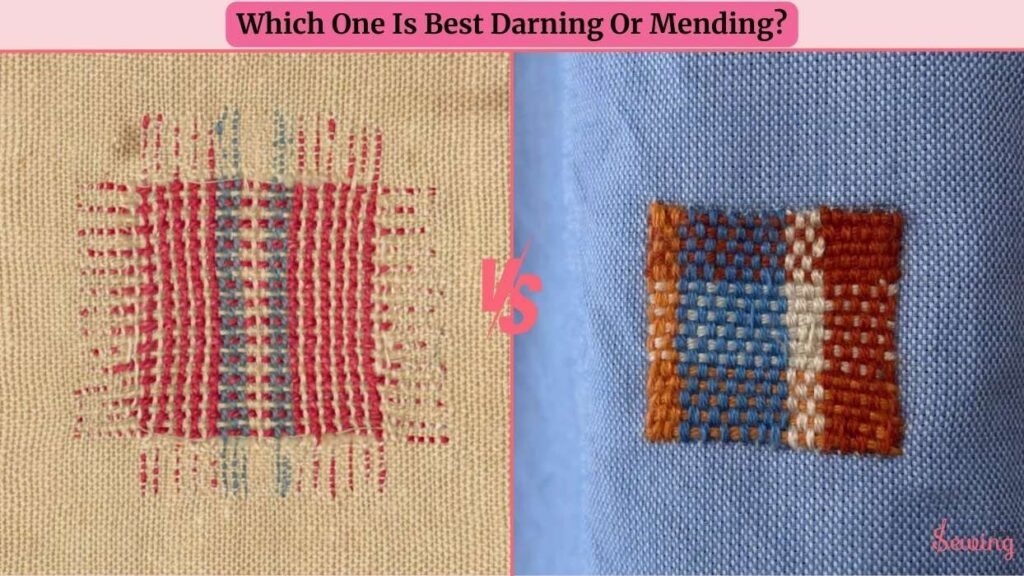
Mending, on the other hand, is more versatile. If you’re dealing with larger tears, ripped seams, or areas that need reinforcement (like knees or elbows).
Mending gives you more options, like sewing patches or stitching decorative designs. It’s also perfect if you want to make your repair stand out as a unique, creative touch. So, Different Methods of darning and mending clothes are both best depending on you.
So, the “best” choice really depends on the fabric, the damage, and whether you want an invisible fix or a bold, personalized repair.
But if you ask me, then I would choose darning stitch over mending. Cause there are many types of darning stitch. So I have the option to style my old clothes.
If you wanna learn more differences like this, then read the difference between darning vs patching.
Closing
So that’s my opinion about darning and mending. Basically, both mean to reinforce your damaged clothes. One is a method, and another is the terms. Whether you choose to darn for subtle, seamless fixes or to mend for versatile and creative repairs, both techniques are fantastic for extending the life of your clothes.


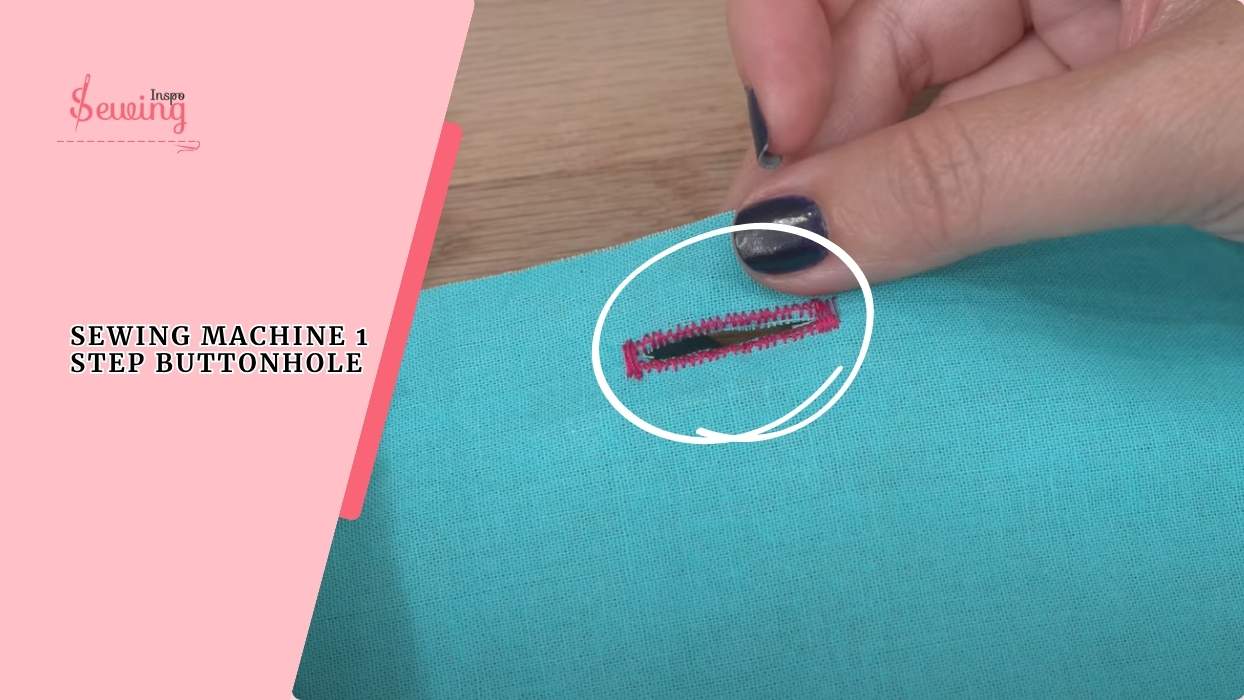
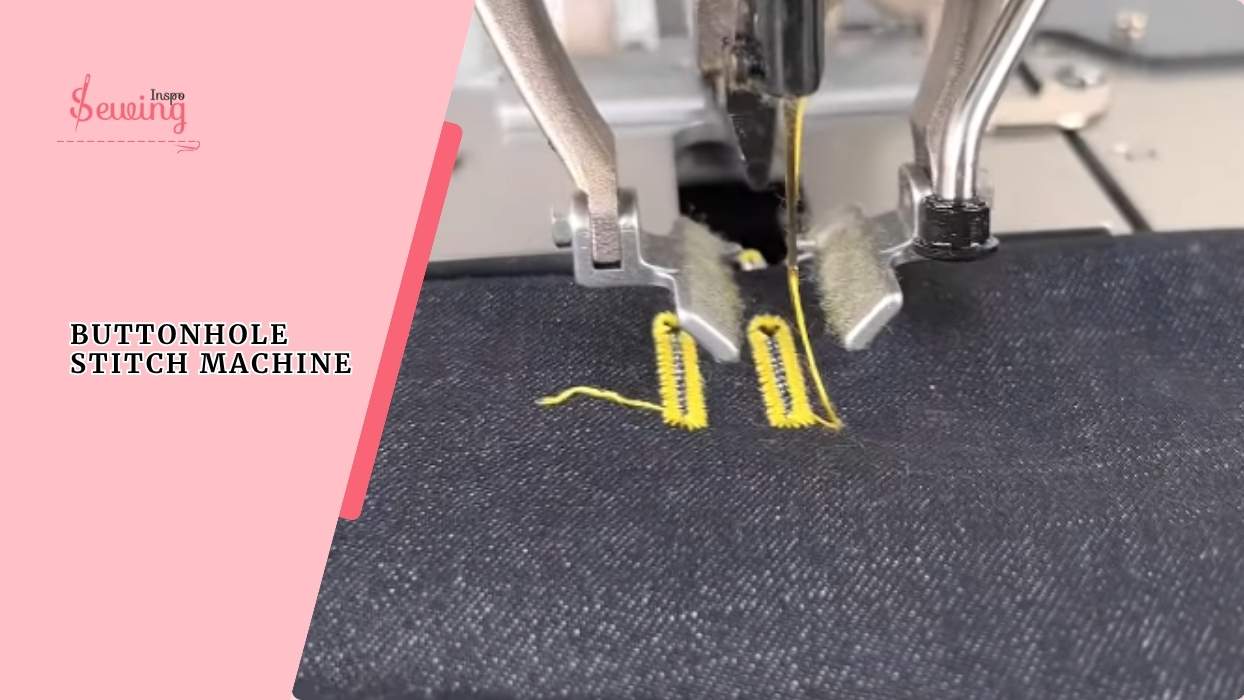
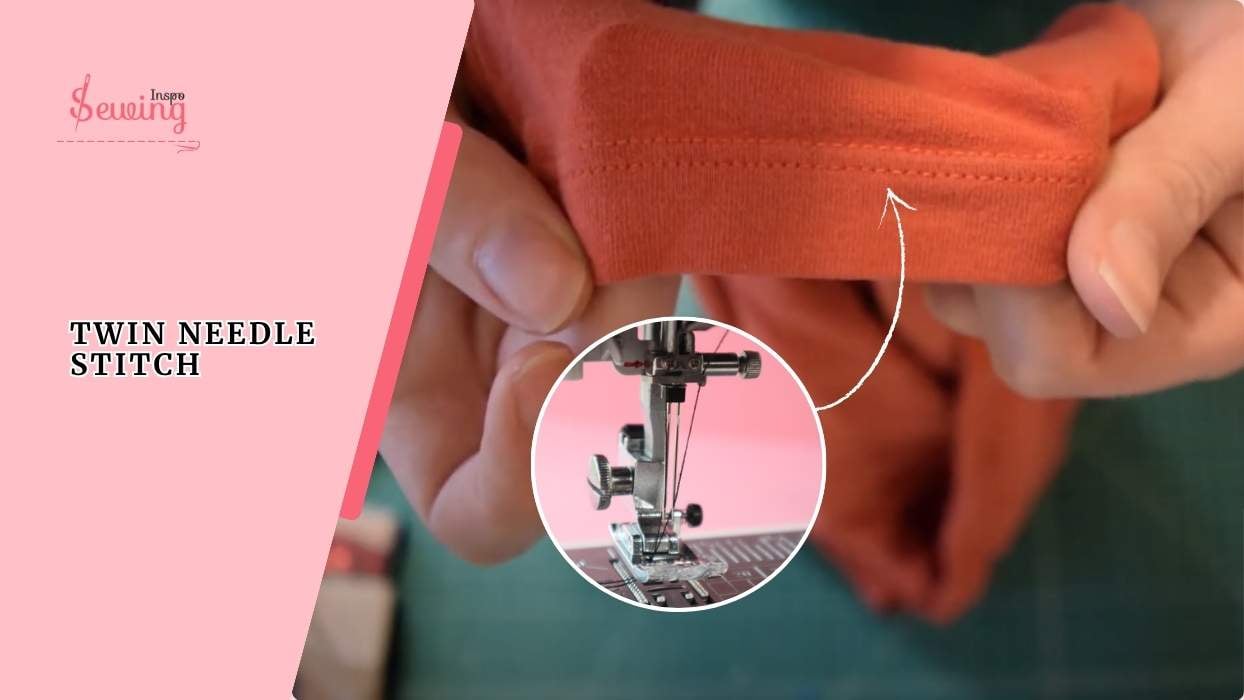
Leave a Reply